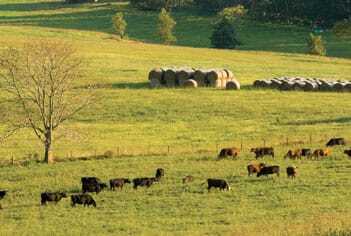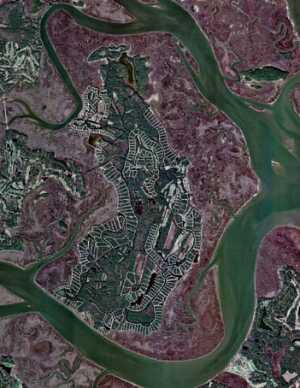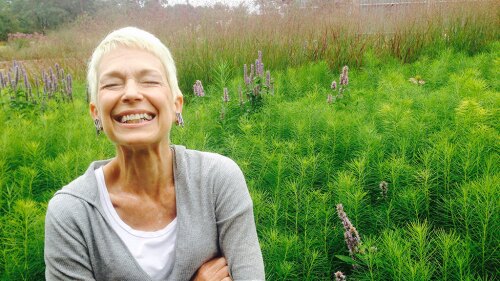Conservation communities prove that developers can make a profit by creating value with nature, open space, and agriculture.
Once an anomaly, communities like Prairie Crossing—a masterplanned conservation community outside Chicago that combines responsible development, extensive open-space preservation, environmental restoration, and organic agriculture—are becoming much more common across America.
Conservation development technologies have been around for decades, but only in the past few years have developers, conservation organizations, landowners, and local governments begun to understand the potential of these technologies to link land conservation with land development while providing meaningful protection of natural resources. In addition, ample evidence exists that shows homebuyers will pay premium prices to live next to nature, green space, and even certain types of agriculture.
This new generation of conservation communities is exemplified by Serenbe, an award-winning 900- acre (365-ha) conservation community about 40 minutes outside of Atlanta. Serenbe has become a destination not just for homebuyers and nature lovers, but also for foodies who dine at one of Serenbe’s well-known restaurants, which serve fruit and vegetables grown on site.
Serenbe’s plan calls for 80 percent green space. At buildout there will be 220 homes, including single-family, multifamily, and live/work units, as well as 95,000 square feet (8,800 sq m) of commercial space, including shops, a bakery, and two restaurants. Serenbe is one of the new generations of conservation communities described in detail in the new ULI book Conservation Communities: Creating Value with Nature, Open Space, and Agriculture.
Conservation communities are as diverse as America. They come in all sizes, shapes, and densities. The book focuses on three primary project types: limited conservation development projects, conservation subdivisions, and large-scale, masterplanned conservation communities.
Limited conservation development projects—such as Storm Mountain Ranch in Steamboat Springs, Colorado, and Bundoran Farm in Albemarle County, Virginia (shown at left) — combine environmentally sensitive, low-density development with extensive land conservation. Storm Mountain Ranch, for example, sites just 14 homes on 1,063 acres (430 ha), almost 800 acres (324 ha) of which are protected in perpetuity by a conservation easement held by the Yampa Valley Land Trust.
The conservation subdivision, the second project type, is a residential development with the maximum number of permitted dwelling units, but located on smaller lots, thus ensuring that a larger portion of the property is preserved as open space. This is different from clustering, which uses the best lands for development and leaves open space as a residual, usually in unbuildable areas such as steep slopes or wetlands. Conservation subdivisions set aside much higher percentages of open space—often 50 to 70 percent or more—and seek to preserve as many key natural and cultural landscape features as possible. Conservation subdivisions have been described as golf course communities without the golf course. A conservation subdivision requires the same careful attention to site layout and design as a golf course community.
Conservation subdivisions and golf communities also share certain economic dynamics. Buyers in golf course communities pay a premium price for access to a shared amenity: the golf course. Homebuyers in golf communities value views across the fairway and are willing to pay more to guarantee that the green space—the tees, greens, and fairways—will remain in perpetuity.
Similar factors drive the market in conservation communities. Buyers pay for access to trails and protected open space. They value views of woodlands, vineyards, pastures, or meadows, and these community amenities contribute to increased home values, even if providing the amenities results in smaller lots or a more compact layout of houses.
The third project type, the largescale, master-planned conservation community, encompasses hundreds or even thousands of acres and often provides a diverse array of housing types and a wide range of commercial, civic, and recreational facilities. Hidden Springs in Boise, Idaho; DC Ranch in Scottsdale, Arizona; and Spring Island in Beaufort, South Carolina (shown at right), are examples of this type of community.
DC Ranch, for example, started with 8,281 total acres (3,351 ha). Of these, 2,600 acres (1,050 ha) were devoted to development, including a diverse mix of 2,700 houses, several golf courses, educational and civic facilities, and mixed-use and commercial development, plus a 140-acre (57-ha) linear park. The vast majority of the property, however—over 5,600 acres (2,260 ha)—was incorporated into the neighboring 16,000-acre (6,500-ha) McDowell Sonoran Preserve.
As early as 1956, the late Charles Fraser, founder of Sea Pines Plantation, South Carolina’s first masterplanned resort, identified nature as the top attraction at Hilton Head Island. The same dynamic holds true today. Far more consumers are drawn to green space than to greens; greenways and natural areas can have the same economic impact as fairways, at far less cost for construction and maintenance. And today there is the added dimension of locally grown food: orchards, vineyards, and organic gardens are attracting a new generation of ecology- and health-conscious consumer.
A number of studies have documented the value of conservation development in reducing stormwater runoff and infrastructure costs. Other research has focused on conservation development’s role in preserving biodiversity, protecting ecosystem services, and promoting other resource values on private lands, especially when traditional sources of conservation capital are lacking.
Now, thanks to new research by Jeffrey Milder of Cornell University and Brad Gentry of Yale University, the aggregate scale of conservation development is becoming better known. In their report Conservation Development in the United States: Practices, Trends, and Opportunities for Land Conservation and Smart Growth, Milder and Gentry estimate that there are thousands of conservation development projects in the United States. In fact, analyzing data from 681 projects encompassing almost 1.2 million acres (485,000 ha), they found that 21 percent of the surveyed projects protect rare or threatened biodiversity, 68 percent preserve natural habitats representative of the project area, and 30 percent provide buffers to other protected areas.
Milder and Gentry’s research further reveals that while conservation outcomes varied considerably, the typical limited development project protects 80 to 95 percent of the project site, while for-profit conservation subdivisions and master-planned communities protect 40 to 70 percent of the site. They also found that “many projects advanced other community needs, such as affordable housing, outdoor recreation, local food production, and opportunities for environmental education.” Extrapolating from their project sample, Milder and Gentry estimate that conservation development has protected 8.5 million acres (3.4 million ha) of land in the United States.
But despite numerous conservation successes, there will never be enough money available to purchase all the natural areas and cultural sites that need to be protected. The land conservation community needs to make better use of the marketplace as a tool for conservation. Easements are one private sector tool, but conservation development is another.
Like any planning effort, conservation development is not a panacea. It requires tradeoffs and it is not appropriate in every setting or for every site. When the recession ends, greenfield development will resume—like it or not. Instead of allowing rural landscapes to be systematically carved up into a checkerboard of house lots and streets, local governments should embrace a concept that is fair to rural landowners, but that also has the demonstrated ability to conserve groundwater, rural character, natural lands, working family farms, wildlife, and home values.
For as long as people have lived in cities, many have dreamed of returning to the land. A conservation community is made up of individuals and families who love the land. This land can be forests, farms, ranchland, or any other type of land that needs protecting from high-impact development. Conservation communities prove that developers can focus on nature and still make a profit. UL






